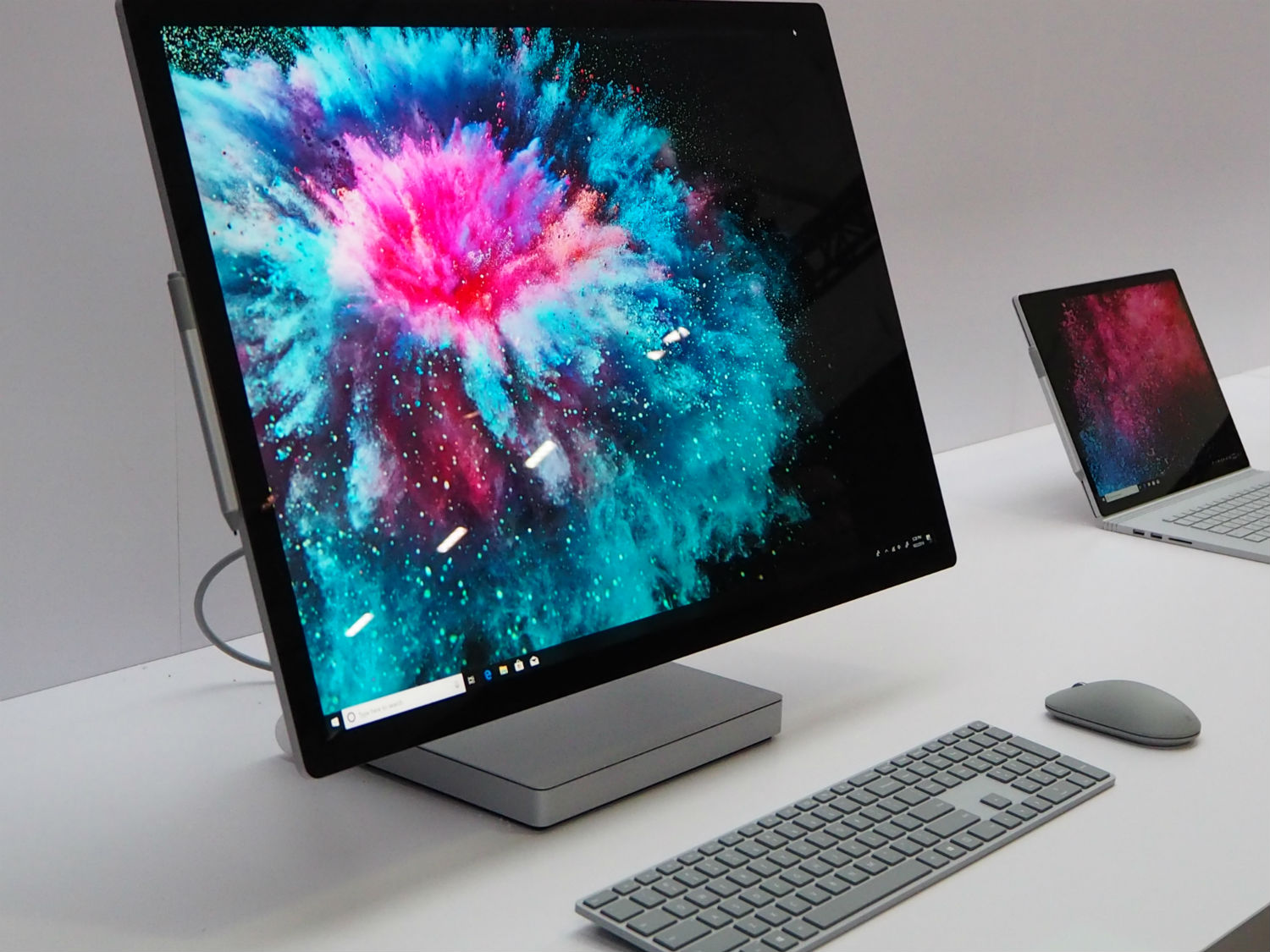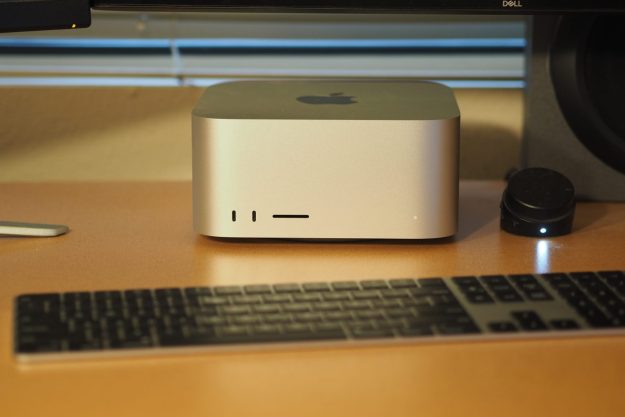
All-in one systems are at their best when they have everything you need in a compact, attractive package with plenty of screen detail and real estate for any computing task you require. With such demands, you often need to pay for the privilege, but both Microsoft and Apple have some great hardware options for the discerning all-in-one buyer. To find out who does it best, we pitted the Surface Studio 2 vs. iMac Pro in a classic head to head.
For a look at some other great all-in-ones, check the round-up up of our favorites.
Design
Despite both being all-in-one systems, the approach to where the real meat of the hardware is located is slightly different in both the Surface Studio 2 and iMac Pro. Where the iMac Pro utilizes a thin, all-aluminum frame at its base and packs all of its processing and storage capabilities behind its 27-inch screen, the Surface Studio 2 has a base station at the bottom of its hinge which houses most of its powerful components. That means its display is thinner, although the iMac’s stand is arguably the more minimalist of the two.
With the more robust base on the Surface Studio 2 and a lighter display, Microsoft is able to offer great versatility in the orientation of the device. Using its “zero-gravity” hinge, the Surface Studio 2 can be effortlessly moved from a standard, upright display, to something more akin to a desk-mounted tablet, making it much easier to use accessories like the Surface Pen or Surface Dial to interact with on screen elements. The iMac Pro can change its tilt angle, but it doesn’t feature any kind of fold-flat functionality.
Regardless of orientation, both designs are attractive with clean lines and silver accenting the black, rounded-corner bezels of the display. They’re a far cry from the bezel-free laptop and desktop displays which are becoming more commonplace in other market sectors, but space restrictions in all-in-one designs make that much harder to achieve.
The port selection between the two is far more varied, though. The Surface Studio 2 has four USB-A 3.0 ports, a full-size SDXC card reader, a headphone jack, and a Gigabit Ethernet port. The iMac Pro, on the other hand, has four USB-A 3.0 ports, as well as four USB-C ports, all of which support the high-speed Thunderbolt 3 standard and are equally compatible with USB 3.1. It also comes with a standard 3.5mm headphone jack, an SDXC card reader, and 10-gigabit Ethernet.
Performance

Both systems sport powerful hardware, but there are some stark differences in their options and pricing structures. The entry-level Surface Studio 2 starts at $3,500 and comes with a seventh-generation Intel Core i7-7820HQ quad-core CPU, 16GB of
The iMac Pro has a much higher starting price point at $5,000, but comes with a more impressive array of hardware. It sports an eight-core Intel Xeon W-2140B CPU, with 32GB of
Such a maxed-out configuration comes with a price tag in excess of $13,000.
Each system, regardless of configuration, has its own single display choice. With the Surface Studio 2, you get a 28-inch 4,500 x 3,000 resolution PixelSense screen, which is roughly specced the same as the first-generation Surface Studio. However, this one gets much brighter and has greater contrast, so should have more depth in its image. It uses the 3:2 aspect ratio, so is better for web browsing and productivity, though less desirable for media viewing.
That’s almost the opposite of the iMac Pro’s display, which is both higher-resolution and in a more traditional 16:9 aspect ratio. It’s one of Apple’s “5K” retina displays with a resolution of 5,120 x 2,880. Its brightness is comparable to the Surface Studio 2’s at 500 nits, though it is a little smaller at 27-inches diagonally.
Operating system
As much as the design and hardware of these two systems is important, the core of the debate between these two all-in-ones is whether you want a Windows or MacOS environment. There are ways to have both, but most will opt for either platform with a notable preference for it over the alternative. If you’re on the fence, there are some factors to consider.
The latest version of MacOS, Mojave, pairs well with existing Apple products like iPhones and iPads, and can take advantage of MacOS exclusive apps like Logic Pro X and Final Cut Pro X, both of which can be purchased with an iMac Pro as part of a bundle. The Surface Studio 2 has the advantages of the latest version of Windows 10, which means its compatible with a wider range of software, including both productivity software and games.
Although the Surface Studio 2’s hardware is weaker than the iMac Pro’s in certain configurations, it is a perfectly viable gaming machine. That’s not exactly what it was designed for, but the gaming ecosystem is far more robust on Windows and if it’s something you plan to do when you aren’t using the Surface Studio 2’s more creative features, it’s a far better platform for doing so on than the iMac Pro.
What are you willing to pay?
It’s likely that your choice of MacOS or Windows will be a huge deciding factor in which all-in-one you opt for, but outside of that decades-long debate, cost is the biggest factor here. The iMac Pro is unarguably the more powerful machine, even with its base configuration. It has more cores and more threads on its CPU, more powerful graphics chips, more memory, and greater storage capacities. But all of it comes at a cost.
You can buy the most powerful Surface Studio 2 for less than the base model iMac Pro, and if you don’t need that much memory or graphical capability, you can save a lot by opting for the more modest configurations.
If you do decide to go with the iMac Pro, consider that we may see a refresh before the end of the year, so it may be worth holding out a few more months to find it that prediction holds true.
Editors' Recommendations
- Surface Pro 10: all the major changes rumored for the new model
- The 5 best iMac alternatives in 2024
- Best Apple deals: Save on AirPods, Apple Watch, iPad, MacBook
- Why one of my favorite laptops still struggles against the MacBook Pro
- The easy way to choose between the Mac Studio and Mac mini




